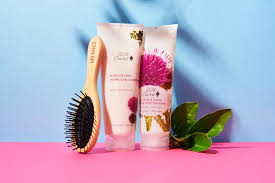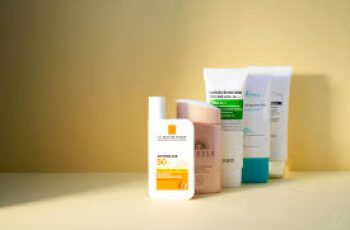
For individuals managing celiac disease or a wheat allergy, choosing the right skincare products is incredibly important. As a dermatologist, I know navigating product labels for gluten can feel overwhelming.
This guide will help you understand how topical gluten might affect you. We’ll discuss obvious and hidden gluten sources in skincare. You’ll also get practical tips for finding safe, gluten-free options.
Our goal is to empower your skincare choices, ensuring your health and skin quality are both supported.
You can find a great gluten-free skincare routine for your specific skin needs. Take our quiz to discover your **Baumann Skin Type**. This quiz provides personalized product suggestions.
From that list, you can then choose gluten-free skincare items. Currently, you’ll still need to read product labels carefully. However, I hope to soon offer a filter function.
This would allow you to directly search for gluten-free products tailored to your Baumann Skin Type.
### Understanding Gluten in Skincare
Many skincare products contain ingredients derived from wheat. If you have gluten sensitivity or wish to avoid gluten, identifying these ingredients is crucial.
I’ve provided a list of common INCI names below. However, it’s important to keep reading afterward. Some ingredients on the list can sometimes be sourced in a gluten-free manner.
Limited research directly addresses topical gluten’s effects on celiac disease. The current scientific understanding suggests gluten must be ingested to trigger a celiac response.
This is because gluten peptides interact with the immune system in the gastrointestinal tract.
### Finding Gluten-Free Skincare
We’ve used AI to scan ingredient labels for our online store’s products. This helps identify potentially gluten-free options.
We haven’t contacted manufacturers directly, so for absolute certainty, you should reach out to them. However, we are reasonably confident in these product suggestions.
To start, **take our skin type quiz**. This will help diagnose your **Baumann Skin Type**. You’ll then receive a custom skincare routine.
This routine includes a step-by-step guide with product recommendations. You can select any gluten-free skincare options from that list.
**What is my skin type?** That’s the first step to a personalized routine.
### Specific Gluten-Free Product Categories
We’re working to expand our lists of certified gluten-free products.
#### Gluten-Free Soap and Cleansers
We’ve identified some medical-grade gluten-free soaps, face washes, and cleansers. More options will be coming soon!
#### Gluten-Free Moisturizers
Choosing the right moisturizer depends on your skin type. Dry skin types benefit from barrier repair moisturizers. Oily types need lighter, non-comedogenic options.
Here are some of the best gluten-free face creams and lotions we’ve found.
* **Gluten-Free Barrier Repair Moisturizers**
* **Gluten-Free Non-Comedogenic Moisturizers**
#### Gluten-Free Lip Balms and Lipsticks
We also have information on gluten-free lip balms and lipsticks.
#### Gluten-Free Eyeliner
You can find our recommendations for gluten-free eyeliner too.
### Skincare Ingredients That May Contain Gluten
Here’s a list of INCI names for cosmetic ingredients that might contain wheat or gluten. Look for these on product labels:
* **Avena Sativa (Oat)**
* **Cyclodextrin**
* **Dextrin**
* **Dextrin Palmitate**
* **Glycine Soja Seed Extract**
* **Xanthium Strumarium Fruit Extract**
* **Fagopytum (Buckwheat) Leaf Extract**
* **Lactobacillus/Oat/Rye/Wheat Seed Extract Ferment**
* **Hydrolyzed Vegetable Protein**
* **Hydroxypropyltrimonium Corn/Wheat/Soy Amino Acids**
* **Hydroxypropyltrimonium Hydrolyzed Wheat Protein/Siloxysilicate**
* **Lactobacillus/ Rye Flour Ferment**
* **Lactobacillus/ Rye Flour Ferment Filtrate**
* **Laurdimonium Hydroxypropyl Hydrolyzed Wheat Amino Acids**
* **Malt Extract**
* **Maltodextrin**
* **Sodium Lauroyl Oat Amino Acids**
* **Beta Glucan (Oat)**
* **Sodium Lauroyl Oat Flour**
* **Phytosphingosine**
* **Polygonum Aviculare Extract**
* **Potassium Cocoyl Hydrolyzed Oat Protein**
* **Secale Cereale (Rye) Seed Extract**
* **Secale Cereale (Rye) Flour**
* **Saccharomyces/ Barley Seed Ferment Filtrate**
* **Secale Cereale (Rye) Phytoplacenta Placenta Culture Extract Filtrate**
* **Sodium C8-16 Isoalkylsuccinyl**
* **Sodium Wheat Germanphoacetate**
* **Stearyl Dimonium Hydroxypropyl**
* **Steardmnonium Hydroxypropyl Hydrolyzed Wheat Protein**
* **Tocopherol Acetate**
* **Triticale**
* **Triticum Aestivum (Wheat) Flour**
* **Triticum Boeoticum**
* **Triticum Carthlicum**
* **Triticum lipids**
* **Triticum Monococcum**
* **Triticum Turgidum Durum (Wheat) Seed Extract**
* **Triticum Vulgare**
### Ingredients That Always Have Gluten
Some ingredients definitively contain gluten proteins. There’s no way to derive extracts from these grains without them.
* **Hydrolyzed Wheat Protein:** Contains proteins from wheat gluten, processed via acid hydrolysis.
* **Triticum Aestivum (Wheat) Flour:** Standard wheat flour, which contains gluten proteins.
* **Triticum Durum (Wheat) Seed Extract:** Extracts from wheat seeds will contain gluten.
* **Triticum Vulgare:** This wheat species naturally contains gluten proteins.
* **Secale Cereale (Rye) Extract:** Rye is a close relative of wheat and contains gluten proteins like secalin.
* **Hordeum Vulgare (Barley) Extract:** Barley is a gluten grain with hordein proteins.
* **Malt Extract/Maltodextrin:** Typically derived from barley, meaning it contains hordein gluten proteins.
* **Lactobacillus/Wheat Seed Extract Ferment:** Bacterial fermentation of wheat sources will result in compounds with gluten.
### Ingredients That May or May Not Have Gluten
The gluten content in these ingredients can vary depending on their source. It’s impossible to know just by reading the product label.
You’ll need to contact the skincare brand to confirm if their product is gluten-free.
* **Avena Sativa (Oat) Extract:** Oats are naturally gluten-free but can be cross-contaminated. Oat extracts from certified gluten-free oats should be safe.
* **Cyclodextrin/Dextrin:** These are made from starch. The starch could come from wheat, but not always. You need to verify the source.
* **Hydrolyzed Vegetable Protein:** This could contain protein from wheat. However, if it’s made only from corn or soy, it might be gluten-free.
* **Lactobacillus/Oat/Rye/Wheat Seed Extract Ferment:** Fermentation with bacteria often involves gluten sources like wheat.
* **Malt Extract/Maltodextrin:** Usually derived from barley, which contains gluten.
* **Sodium Lauroyl Oat Amino Acids/Oat Flour:** Similar to whole oats, these could be cross-contaminated.
* **Rye (Secale Cereale) Extracts:** Rye naturally contains gluten proteins.
* **Tocopherol Acetate:** Vitamin E. If sourced from wheat germ oil, it will have gluten. However, tocopherol from other vegetable oil sources, like soy, is fine.
This highlights why manufacturers need to disclose ingredient sources.
### Skin Absorption of Gluten: What You Should Know
Gluten’s large molecular size generally means it’s unlikely to be absorbed through the skin.
However, for individuals with celiac disease or wheat allergies, it’s still recommended to choose gluten-free skincare products. This is a precautionary measure.
It helps avoid any risk of gluten transfer to the mouth or eyes. Such transfer could lead to systemic absorption. This, in turn, might trigger an allergic reaction or celiac response.
### Celiac Disease and Skincare: Minimizing Risk
If you have celiac disease, ingesting gluten triggers an autoimmune response that damages your small intestine.
Therefore, opting for skincare products explicitly labeled as gluten-free minimizes the risk of accidental gluten ingestion.
It’s especially wise to be cautious with products applied near your mouth or on your hands. These areas could easily come into contact with food.
### Research Highlights: Topical Gluten and Skin
Here’s a summary of relevant studies on the effects of gluten on the skin.
#### Studies Showing Benefits of Wheat and Gluten on Skin:
1. A 2008 study by Akhtar and Yazan investigated a stable emulsion with vitamin C and wheat protein. It showed increased skin moisture, highlighting moisturizing benefits.
2. Demidov et al.’s 2008 research on fermented wheat germ extract (Avemar) suggested positive impacts on melanoma patients’ survival. This indicates its potential as an adjunct therapy.
While wheat and gluten won’t cure melanoma, I include this for completeness.
#### Studies Showing Downsides to Using Gluten and Wheat on Skin:
1. Codreanu et al. warned against using food proteins, including wheat, in products for neonates and infants with atopic dermatitis. This is due to the risk of sensitization.
2. Fukutomi et al.’s 2014 study linked facial soaps containing hydrolyzed wheat protein to a higher risk of wheat allergy.
3. Laurière et al. in 2006 discussed the increased allergenicity of hydrolyzed wheat proteins in cosmetics. This can lead to contact urticaria and potentially precede food allergies.
#### Studies Showing Effects of Dietary Gluten on Skin:
1. Bonciolini et al. in 2015 observed improvement in skin lesions for patients with non-celiac gluten sensitivity after starting a gluten-free diet.
2. In a 2011 study by Celakovská et al., researchers examined wheat allergy’s effects on atopic eczema in 179 adults.
Using various testing methods, including double-blind, placebo-controlled food challenge tests, they found wheat allergy exacerbated the condition in 4.5% of participants.
This indicates a direct impact of wheat on atopic eczema progression. This study emphasizes identifying dietary triggers for effective skin condition management.
These studies collectively highlight the complex relationship between topical wheat/gluten exposure and various skin reactions. This is especially true for sensitive and allergic individuals.
Do you have any specific concerns about current products you’re using?


